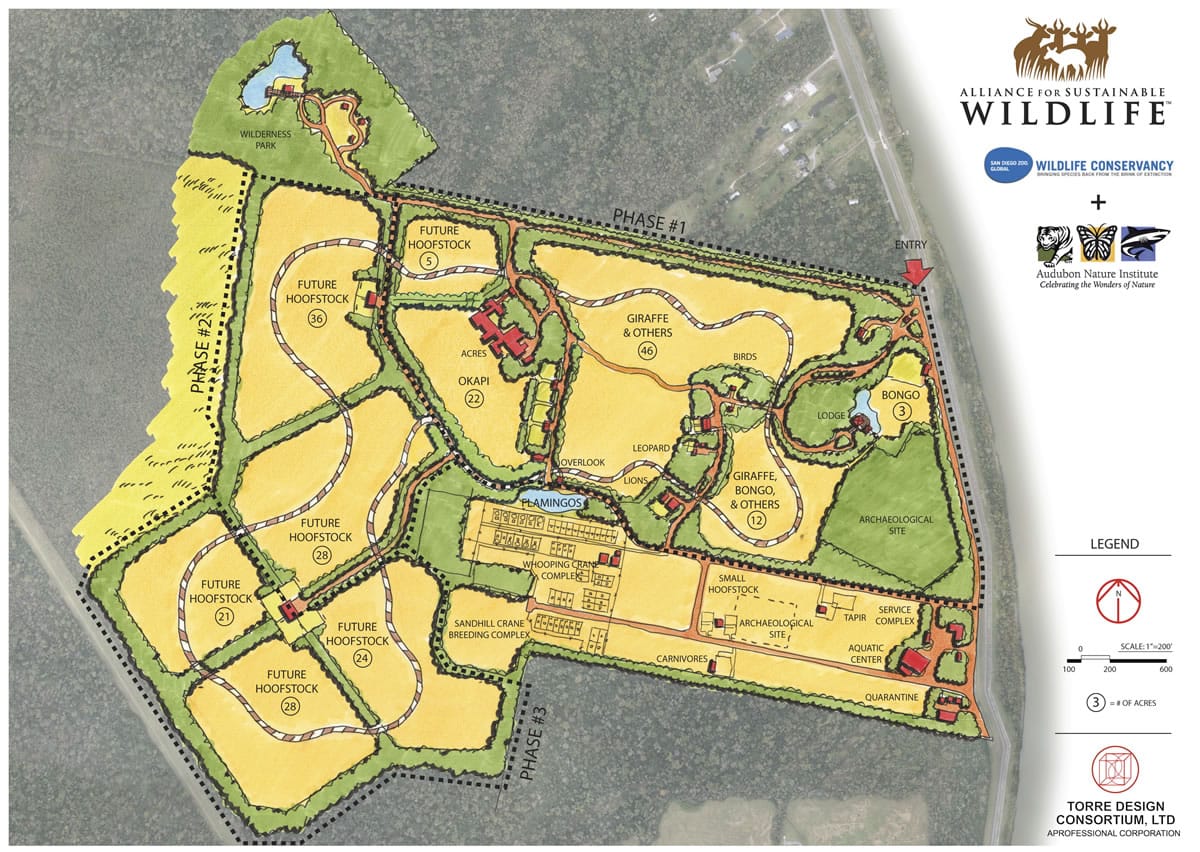NEW ORLEANS — A planned 1,000-acre range near New Orleans’ will serve as a haven for antelope and bird species that aren’t breeding as well as zookeepers would like, giving some of the animals a chance to roam in herds that zoos don’t have space for.
Groundbreaking on the project is set to begin Wednesday. New Orleans’ Audubon Nature Institute and the San Diego Zoo Global Wildlife Conservancy are partners on the project. The Alliance for Sustainable Wildlife will use most of the 1,400 acres at the Audubon Species Survival Center, where scientists began breeding endangered cranes, hoofed animals and cats in 1996.
The Coast Guard is among agencies that must approve any plans because it leases the land to Audubon, said Joel Hamilton, Audubon’s vice president and general curator.
He said Alliance officials hope to get the first okapi, bongo and giraffes into their 12- to 46-acre pens in October. Okapi — giraffes’ only living relatives — and bongo, large striped antelope native to Africa, are considered near-threatened, their numbers decreasing.
“Giraffe aren’t classified as endangered, but they are declining. We’re focused on those that are declining,” said Robert J. “Bob” Wiese, chief life sciences officer at San Diego Global. He said sable antelope, which have sweeping horns and Mohawk-style manes, are likely to be early arrivals.
He said the range will probably start with about 10 giraffe, two to four okapi, and about five to eight bongo and sable antelope — one male per species.
“The idea would be to grow to herds of 20 to 30. But during that whole time we’ll be exchanging animals out to other zoos that we partner with. We’ll be able to hold a large number there and supply the other zoos if needed,” he said.
The spacious paddocks wouldn’t mean rounding up animals that need checkups.
“We usually train them to come to a certain area on a daily or weekly basis, so that if we needed to catch somebody for a medical exam or somebody being shipped out, they’re used to that,” Wiese said.
Two endangered crane species already at Audubon, whooping cranes and Mississippi sandhill cranes, will become part of the project, though they’ll remain paired in cages aimed at the best genetic match.
Hamilton said a pond will be dug for water-based birds such as flamingos and pink pelicans. Some African crowned cranes likely would live there, too, he said.
Organizers hope to work out final details this week and then send the project out for bidding, Hamilton said.
“We spent the year planning and drawing plans and policies and structures for collaborating together with Audubon,” Wiese said. “It’s a great time to break ground and get some dirt moving.”



